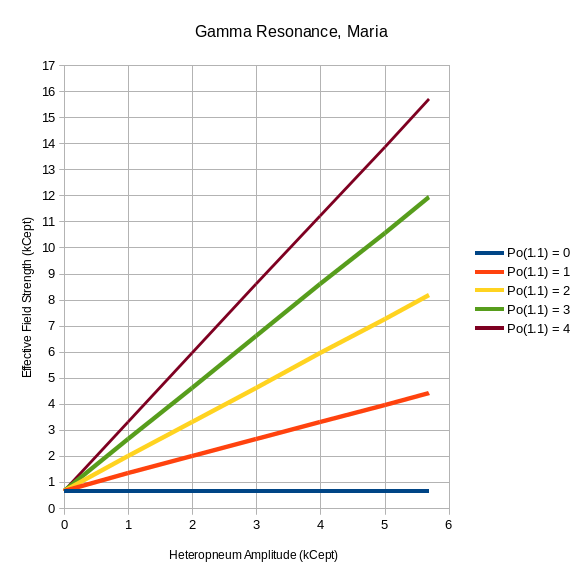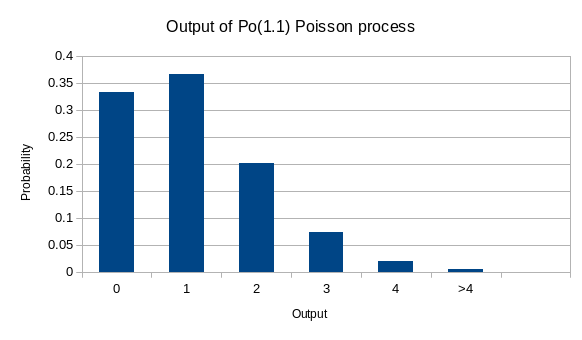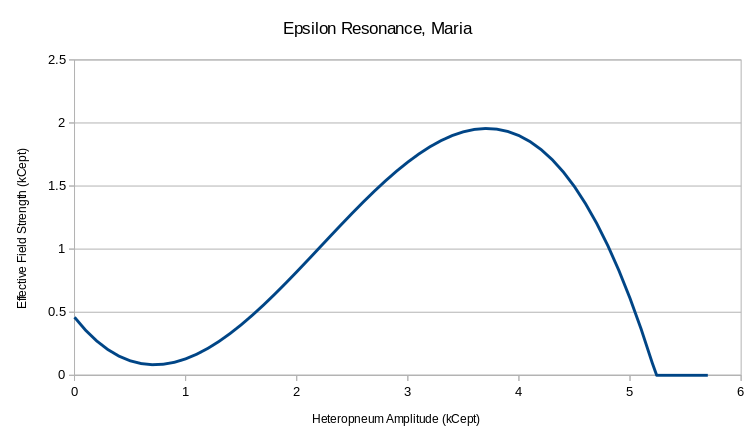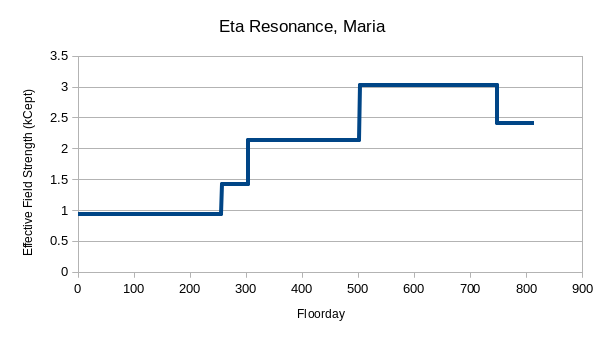D&D.Sci(-Fi) June 2021 Evaluation and Ruleset
6Xeno of Citium
6SarahNibs
2abstractapplic
5simon
4abstractapplic
New Comment
I read Floornight because of this post and it was very good. So, there was at least some benefit to making this fanfiction.
This was a fun one! Post-mortem:
Biggest miss is that I failed to guess that the distributions were identical up to a constant person/resonance multiplier. Actually I did guess that initially, but decided it probably wasn't true, which is why it's my biggest miss. I started thinking it when Maria hit more x1s than x0s on Gamma while Janelle hit more x0s than x1s, leading me to think that there were more person-dependent factors than just one. IIRC the nail in the coffin of that theory was looking at Epsilon resonance. It was clear that Epsilon was non-random and inspecting the overlapping areas of the curve showed (e.g.)
A|Janelle|Maria|multiplier
-----
0.28|0.17|0.21|0.86
1.28|0.20|0.26|0.77
Later, I lowered my confidence in Will's Epsilon prediction because I knew our instruments have limited precision. I didn't connect that with "maybe 0.77 vs 0.86 isn't that far off given imprecision!".
Also I think I was modeling the precision incorrectly, probably. I took "for example, since they say Earwax has an amplitude of 3.2 kCept, you can be 100% sure the true value is between 3.15 and 3.25 kCept" to mean that every value could be plus or minus 0.05, but I think now it actually meant that values were rounded to the nearest digit shown, so a listed value of 0.28 kCept was not between 0.23 and 0.33, but rather between 0.275 and 0.285?
Biggest hit, I think, was correctly determining Janelle's actual chances: I said 25% win, 39% double; actual was 37% win, 30% double. Method was seeing graphs that were clearly 5 linear trends by power, estimating the zero, estimating their slopes, and noticing the multiplier.
Also I think I was modeling the precision incorrectly, probably. I took "for example, since they say Earwax has an amplitude of 3.2 kCept, you can be 100% sure the true value is between 3.15 and 3.25 kCept" to mean that every value could be plus or minus 0.05, but I think now it actually meant that values were rounded to the nearest digit shown, so a listed value of 0.28 kCept was not between 0.23 and 0.33, but rather between 0.275 and 0.285?
Yes, that's exactly what happened. That ambiguity didn't occur to me; I've now edited the original post to clarify so future players won't have the same issue; mea culpa.
Zeta Resonance randomly fails and produces 0kCept 22% of the time.
So it was statistically independent, and I still managed to Texas-sharpshooter up a 0.00006457 significance level for a false stop at 2.27. Tbh, I expected that the other reasons (edit: see this comment) for Zeta on Earwax to be unsafe were more likely than the stop at 2.27 being just random variation - looks like my priors against such a stop were too weak.
Also the Poisson theme seems it should have been discoverable, but I didn't look into the random variation in the resonances where the random variation seemed irrelevant. (And it mostly was, except that it would have provided insight into gamma, where it did matter.)
Now it’s all over, I would just like to make sure everyone appreciates the restraint I demonstrated in not using any of the following lines:
“Earwax really shouldn’t have been able to reach you so quickly: it’s a heteropneum, not a heteronyoom.”
“There’s no I in [teem].”
“Good Floornight, sleep Floortight, don’t let the heteropneums Floorbite.”
Curated and popular this week






